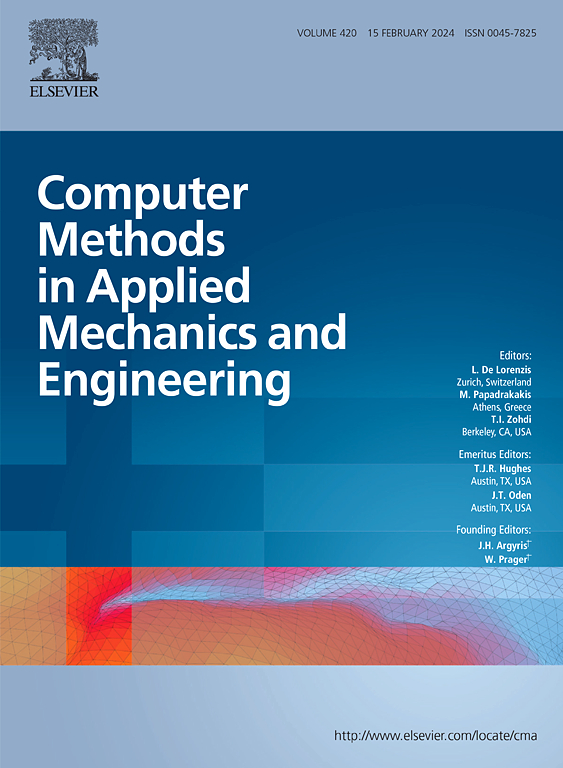Adaptive finite element interpolated neural networks
IF 6.9
1区 工程技术
Q1 ENGINEERING, MULTIDISCIPLINARY
Computer Methods in Applied Mechanics and Engineering
Pub Date : 2025-02-08
DOI:10.1016/j.cma.2025.117806
引用次数: 0
Abstract
The use of neural networks to approximate partial differential equations (PDEs) has gained significant attention in recent years. However, the approximation of PDEs with localised phenomena, e.g., sharp gradients and singularities, remains a challenge, due to ill-defined cost functions in terms of pointwise residual sampling or poor numerical integration. In this work, we introduce -adaptive finite element interpolated neural networks. The method relies on the interpolation of a neural network onto a finite element space that is gradually adapted to the solution during the training process to equidistribute a posteriori error indicator. The use of adaptive interpolation is essential in preserving the non-linear approximation capabilities of the neural networks to effectively tackle problems with localised features. The training relies on a gradient-based optimisation of a loss function based on the (dual) norm of the finite element residual of the interpolated neural network. Automatic mesh adaptation (i.e., refinement and coarsening) is performed based on a posteriori error indicators till a certain level of accuracy is reached. The proposed methodology can be applied to indefinite and nonsymmetric problems. We carry out a detailed numerical analysis of the scheme and prove several a priori error estimates, depending on the expressiveness of the neural network compared to the interpolation mesh. Our numerical experiments confirm the effectiveness of the method in capturing sharp gradients and singularities for forward and inverse PDE problems, both in 2D and 3D scenarios. We also show that the proposed preconditioning strategy (i.e., using a dual residual norm of the residual as a cost function) enhances training robustness and accelerates convergence.
求助全文
约1分钟内获得全文
求助全文
来源期刊
CiteScore
12.70
自引率
15.30%
发文量
719
审稿时长
44 days
期刊介绍:
Computer Methods in Applied Mechanics and Engineering stands as a cornerstone in the realm of computational science and engineering. With a history spanning over five decades, the journal has been a key platform for disseminating papers on advanced mathematical modeling and numerical solutions. Interdisciplinary in nature, these contributions encompass mechanics, mathematics, computer science, and various scientific disciplines. The journal welcomes a broad range of computational methods addressing the simulation, analysis, and design of complex physical problems, making it a vital resource for researchers in the field.

 求助内容:
求助内容: 应助结果提醒方式:
应助结果提醒方式:


